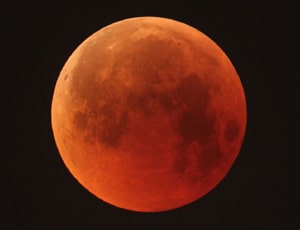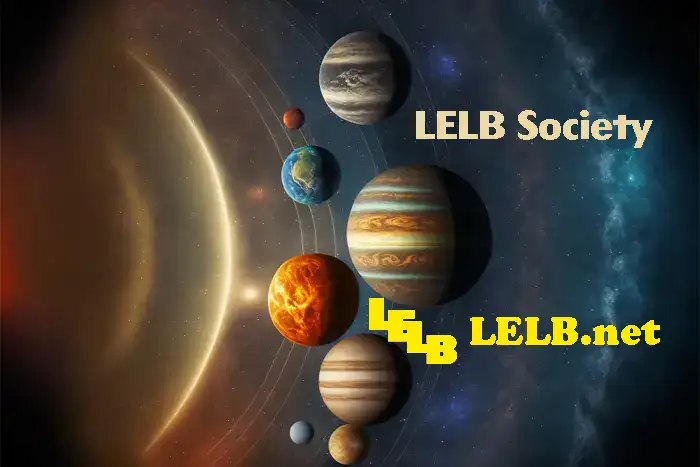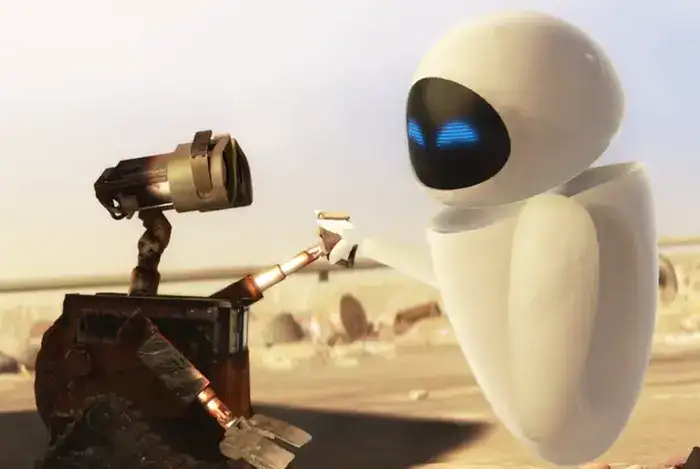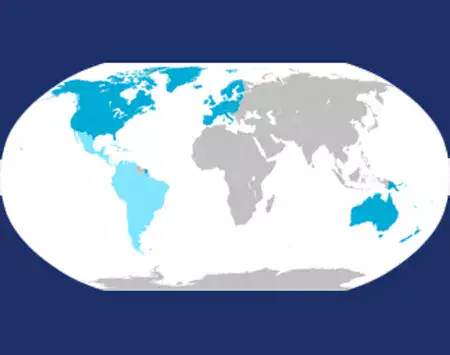English Documentary on Lunar Eclipse with Transcript & Flashcards to make your listening and reading abilities better and enrich your vocabulary
Source of documentary: National Geographic YouTube Channel
Lunar eclipse
A lunar eclipse happens when the Earth blocks some or all of the Sun’s direct light from reaching the Moon. This cosmic event only takes place during a full Moon, which happens once every 29 and a half days or the length of one full orbit of the Moon around the Earth. So why don’t we have an eclipse every month?
The Moon’s orbit is tilted a few degrees in relation to the Earth, so the Earth, Moon and Sun don’t always align. When the Earth does eclipse the Sun, it casts two types of shadows on the Moon: a larger shadow known as the penumbra, and a smaller darker shadow known as the umbra.
Different types of lunar eclipses
There are three types of lunar eclipses. The first is a total lunar eclipse when the Sun, Moon and Earth are in perfect alignment and the Moon falls within the Earth’s umbral shadow. Total lunar eclipses are the most striking of the three types because they turn the Moon a sunset red. While shorter blue wavelengths of light are scattered outward by the Earth’s atmosphere, longer red wavelengths are refracted or bent inward toward the Moon, making it appear red. The brightness of the Moon’s red glow depends upon how much dust and clouds are in the Earth’s atmosphere. Following volcanic activity, ash can block out enough light to render the Moon a darker red or even near black.
A partial lunar eclipse, the second type, occurs when the Earth, Moon and Sun don’t perfectly align, so only part of the Moon passes into Earth’s umbra. Earth’s shadow appears very dark on the side of the Moon facing Earth.
Last, a penumbral lunar eclipse occurs when the Moon passes through Earth’s penumbral shadow. The event is so subtle that most people don’t even notice. The Moon will appear just slightly darker than normal.
Simply look up and enjoy!
Lunar eclipses occur up to three times a year and can be observed from the entire nighttime half of the Earth. Unlike during a solar eclipse, it’s safe to look at the Moon with the naked eye during a lunar eclipse. It is only because of the distances of the Sun and Moon from the Earth that we are able to witness total lunar eclipses.
As the Moon inches away from the Earth each year, one day, billions of years from now, the Moon will be too far away to fall completely within Earth’s umbral shadow. Until then, we can occasionally enjoy seeing our own planet’s shadow cast upon the largest object in the night sky.




I have never seen an Lunar Eclipse and I think it’s so nice too see one. They are red and I wonder that why I didn’t seen one before.
I agree. They’re genuinely astonishing and mysterious.
Feedback
1. an Lunar eclipse = a lunar eclipse
2. it’s so nice too see one = it’s so nice to see one
3. I didn’t seen one before = I haven’t seen one before
As always the cosmuc events e.g. lunar eclipse have been so fascinating, so eye capturing and even mysterious that have catched the attention of human beings through all ages. They were sources for superstitionsin the past and in future they will continue to fascinate human beings and make them think more. We cannot imagine rhe world without these phenomenons.
Feedback
1. cosmuc events = cosmic events
2. eye capturing = eye-catching
3. have catched the attention of human beings = have caught the attention of humans / humans’ attention
4. sources for = sources of
5. phenomenons = phenomena
6. rhe world = the world
I have seen a few partial lunar eclipses in my life but not a total one.
Also lunar eclipse has an effect on tides too. Tides are the highest during lunar eclipses.
Feedback
1. lunar eclipse has = a lunar eclipse has / lunar eclipses have
2. Tides are the highest = Tides reach their apex / maximum height
Lunar eclipse
A lunar eclipse happens when the Earth blocks some or all of the Sun’s direct light from reaching the Moon. This cosmic event only takes place during a full Moon, which happens once every 29 and a half days or the length of one full orbit of the Moon around the Earth. So why don’t we have an eclipse every month? The Moon’s orbit is tilted a few degrees in relation to the Earth, so the Earth, Moon and Sun don’t always align. When the Earth does eclipse the Sun, it casts two types of shadows on the Moon: a larger shadow known as the penumbra, and a smaller darker shadow known as the umbra.
Different types of lunar eclipses
There are three types of lunar eclipses. The first is a total lunar eclipse when the Sun, Moon and Earth are in perfect alignment and the Moon falls within the Earth’s umbral shadow. Total lunar eclipses are the most striking of the three types because they turn the Moon a sunset red. While shorter blue wavelengths of light are scattered outward by the Earth’s atmosphere, longer red wavelengths are refracted or bent inward toward the Moon, making it appear red. The brightness of the Moon’s red glow depends upon how much dust and clouds are in the Earth’s atmosphere. Following volcanic activity, ash can block out enough light to render the Moon a darker red or even mere black.
A partial lunar eclipse, the second type, occurs when the Earth, Moon and Sun don’t perfectly align, so only part of the Moon passes into Earth’s umbra. Earth’s shadow appears very dark on the side of the Moon facing Earth.
Last, a penumbral lunar eclipse occurs when the Moon passes through Earth’s penumbral shadow. The event is so subtle that most people don’t even notice. The Moon will appear just slightly darker than normal.
Simply look up and enjoy!
Lunar eclipses occur up to three times a year and can be observed from the entire night-time half of the Earth. Unlike during a solar eclipse, it’s safe to look at the Moon with the naked eye during a lunar eclipse. It is only because of the distances of the Sun and Moon from the Earth that we are able to witness total lunar eclipses.
As the Moon inches away from the Earth each year, one day, billions of years from now, the Moon will be too far away to fall completely within Earth’s humble shadow, until then we can occasionally enjoy seeing our own planet’s shadow cast upon the largest object in the night sky.
As usual, thanks so much for your excellent transcription. I could detect 2 minor faults, though:
1. or even near black (not mere)
2. within earth’s umbral shadow (not humble)